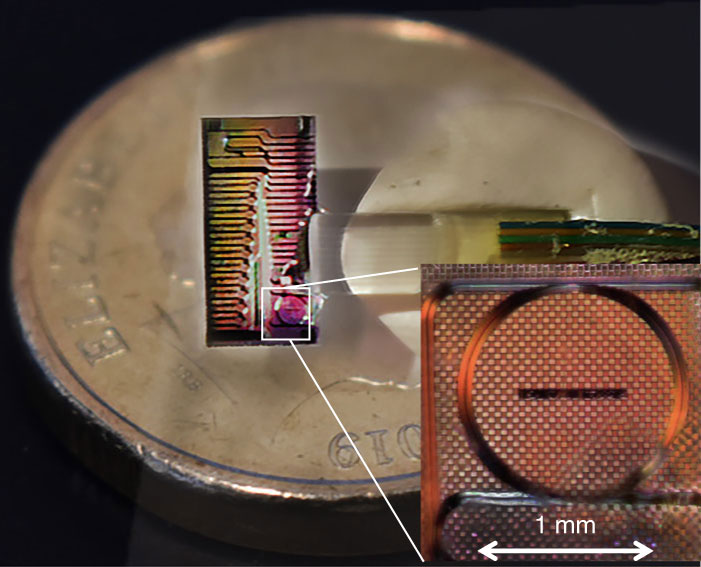
24th May 2020 World's fastest Internet speed: 44.2 Tbps Australian scientists have achieved a new world's fastest Internet speed using a single optical chip, at 44.2 terabits per second (Tbps). Demonstrations of this magnitude are usually confined to a laboratory. For this study, however, researchers used existing communications infrastructure to efficiently load-test the network. The results – published in Nature Communications – offer a glimpse of what the average Internet connection might be like in the not-too-distant future. Researchers from Monash, RMIT and Swinburne universities collaborated to produce a new device that replaces 80 lasers with one single piece of equipment known as a "micro-comb", which is smaller and lighter than current hardware. It was planted into and load-tested using existing infrastructure, which mirrors that used by Australia's National Broadband Network (NBN). The experiment was the first time any micro-comb has been used in a field trial and demonstrated the highest amount of data ever produced from a single optical chip.
Due to COVID-19 lockdowns, "an unprecedented number of people are now using the Internet for remote work, socialising and streaming. It's really showing us that we need to be able to scale the capacity of our Internet connections," said Dr Bill Corcoran, co-lead author of the study and Lecturer in Electrical and Computer Systems Engineering at Monash University. "What our research demonstrates is the ability for fibres that we already have in the ground, thanks to the NBN project, to be the backbone of communications networks now and in the future. We've developed something that is scalable to meet future needs. "And it's not just Netflix we're talking about here – it's the broader scale of what we use our communication networks for. This data can be used for self-driving cars and future transportation and it can help the medicine, education, finance and e-commerce industries, as well as enable us to read with our grandchildren from kilometres away." To show how optical micro-combs can optimise communication systems, a team installed 76.6 km of "dark" optical fibres between RMIT's Melbourne City Campus and Monash University's Clayton Campus. The optical fibres were provided by Australia's Academic Research Network. Within these fibres, researchers placed the micro-comb – contributed by Swinburne University – which acts like a rainbow, producing hundreds of infrared lasers from a single chip. Each high-quality "laser" has the capacity to be used as a separate communications channel. The researchers were able to send maximum data down each channel, simulating peak Internet usage across 4THz of bandwidth and reaching 44.2 Tbps. Australia's average download speed, for comparison, is currently 43.4 Mbps – a million times slower. "In the 10 years since I co-invented micro-comb chips, they have become an enormously important field of research," said David Moss, Director of the Optical Sciences Centre at Swinburne. "It is truly exciting to see their capability in ultra-high bandwidth fibre optic telecommunications coming to fruition. This work represents a world-record for bandwidth down a single optical fibre from a single chip source, and represents an enormous breakthrough for part of the network which does the heaviest lifting. Micro-combs offer enormous promise for us to meet the world's insatiable demand for bandwidth." "Longer term, we hope to create integrated photonic chips that could enable this sort of data rate to be achieved on existing optical fibre links with minimal cost," said Professor Arnan Mitchell, Director of the Micro Nano Research Facility at RMIT University. "Initially, these would be attractive for ultra-high speed communications between data centres. However, we could imagine this technology becoming sufficiently low cost and compact that it could be deployed for commercial use by the general public in cities across the world."
Comments »
If you enjoyed this article, please consider sharing it:
|







